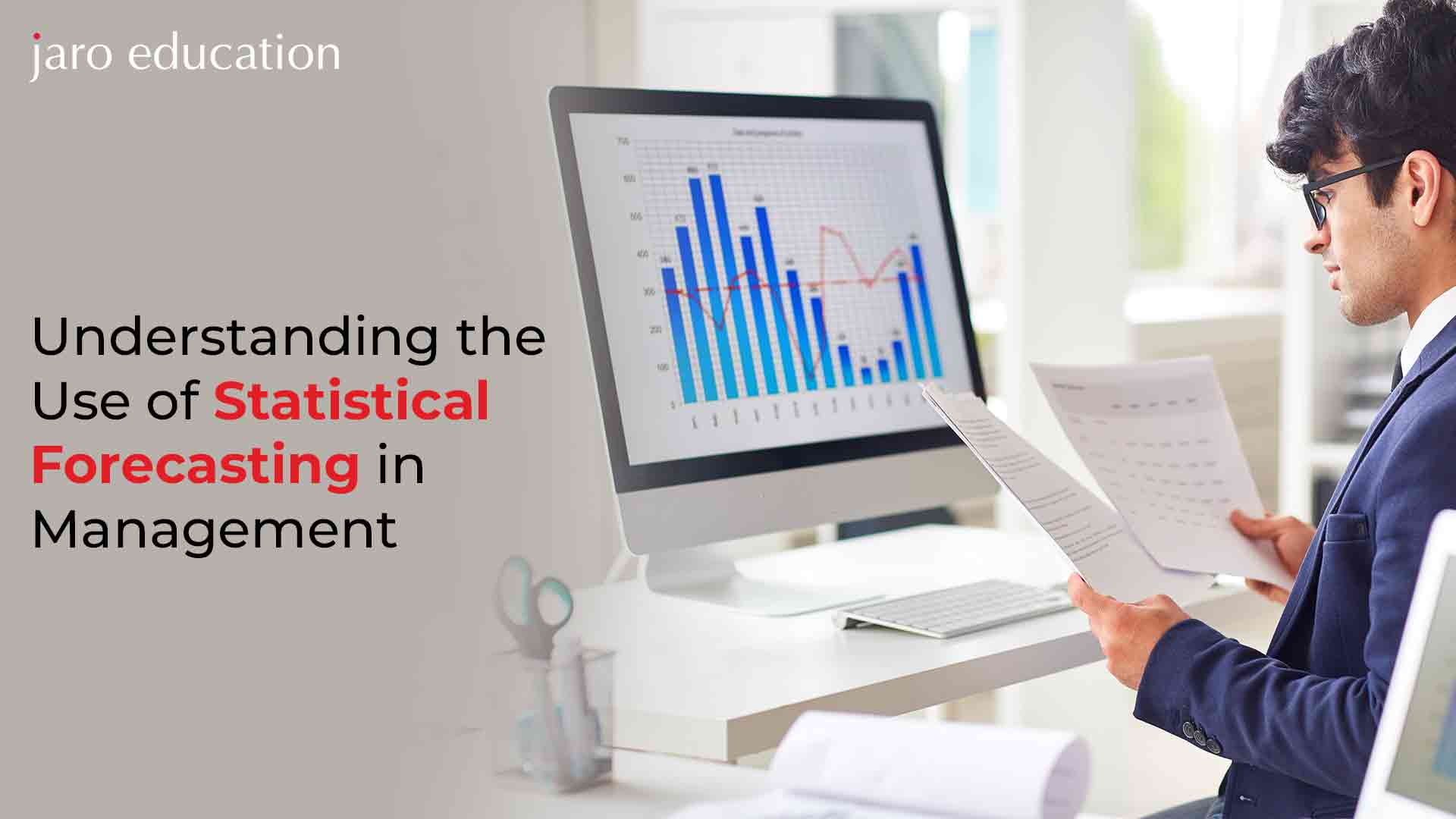Statistical forecasting has been a cornerstone of business management for many years. But what exactly is it, and how does it help in managing businesses efficiently? In this blog post, we will look at what statistical forecasting is, and why it’s used in modern management and taught in online MBA programmes.
What is Statistical Forecasting?
Statistical forecasting is the process of using historical data and mathematical models to predict future events. This type of forecasting can be used in a variety of situations, from predicting consumer demand to estimating the likelihood of a natural disaster.
Statistical forecasting is based on the assumption that past behaviour is a good predictor of future behaviour. This means that if a certain event happened in the past, it is likely to happen again in the future. For example, if a company experienced an increase in sales during the summer months for three years in a row, it might use statistical forecasting to predict that sales will increase during the summer months again this year.
Statistical forecasting can be used in conjunction with other methods of forecasting, such as qualitative techniques or judgemental methods. It is often most effective when used as part of an overall forecasting system that takes into account multiple factors.
Why is it Important in Management?
Statistical forecasting is a powerful tool that can help managers make better decisions. By using statistical methods, managers can better understand past trends and predict future behaviour. Here are some ways in which statistical forecasting is highly beneficial for businesses:
Helps in Making Future Market Predictions
Statistical forecasting is a powerful tool that can help managers make informed decisions about the future of their businesses. By analysing past trends and using statistical models, businesses can make predictions about future market conditions, customer behaviour, and more.
It helps businesses identify opportunities and threats. For example, if a business sees that its sales are starting to level off, it can use statistical forecasting to investigate potential reasons why this is happening. This information can then be used to develop strategies to address any problems that are identified.
Overall, statistical forecasting is a valuable tool that can help managers make informed decisions about the future of their businesses. By understanding past trends and using statistical models, businesses can gain insights into what is working for their company and where there is a scope for improvement.
Helps in Budgeting
Statistical forecasting can help managers in budgeting by providing information on expected future events. This information can be used to make informed decisions on how to allocate resources. For example, if statistical forecasting predicts that sales will increase in the next quarter, managers can budget for additional marketing and advertising expenditures. Conversely, if sales are expected to decrease, managers can cut back on expenditures.
Statistical forecasting is not an exact science, and there is always some uncertainty associated with predictions. However, it can still be a valuable tool for budgeting and decision-making.
Helps in Predicting Demand
Statistical forecasting is a key tool that managers can use to predict future demand for their products or services. By analysing past sales data, managers can develop models that can help them forecast future demand. This information can be used to make decisions about inventory levels, production planning, and marketing campaigns.
There are a variety of statistical methods that can be used for forecasting, and the choice of method depends on the available data and the nature of the business. Some common methods include trend analysis, regression analysis, and time-series analysis.
Helps in Sales Forecasting
Sales forecasting is one of the most important aspects of any business. After all, if you don’t know how much product you need to sell, you can’t make accurate plans for production or inventory. Fortunately, statistical forecasting can help.
Statistical forecasting uses past data to predict future sales. This data can come from a variety of sources, including financial reports, surveys, customer data, and even weather patterns. By analysing this data, businesses can get a better idea of what products will be in demand and when.
Helps in Making Accurate Profit Projections
Statistical forecasting is a key tool that management can use to make accurate profit projections. This technique uses historical data to predict future outcomes. By analysing past trends, management can develop a model that will help them better understand what factors will affect future profits. This information can then be used to make informed decisions about pricing, production levels, and other factors that will impact the bottom line. With careful planning and execution, statistical forecasting can help your business achieve its financial goals.
Helps in Quality Control
Statistical forecasting can help organisations in many ways, but one of the most important ones is quality control. When used properly, statistical forecasting can help identify problems early and prevent them from becoming potential crises.
Additionally, statistical forecasting can help determine when a process is deviating from the desired results and identify the root cause of the problem. By understanding and using statistical forecasting, management can ensure that their organisation is running as efficiently and effectively as possible.
Learn Statistical Forecasting at Manipal University Jaipur’s Online MBA Programme
Become a competent and charismatic manager/leader with the online MBA programme offered by Manipal University Jaipur. This comprehensive two-year programme covers a whole host of business and management topics, such as Statistics for Management, Financial Management, Business Leadership, and more. Learn how to use numbers and interpret data to become an accurate decision-maker and asset for your organisation. Enroll today and secure your future with a comprehensive online MBA course.
Conclusion
Statistical forecasting is a useful tool for management, as it helps them plan more efficiently and accurately. By combining predictions with existing data on past performance, managers can make informed decisions about how to move forward. It allows managers to anticipate future trends, allocate resources effectively and develop effective strategies that will bring the best outcomes.







